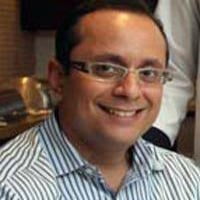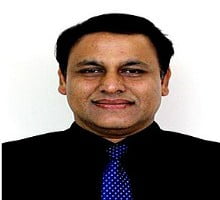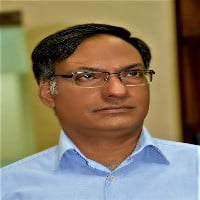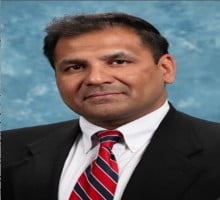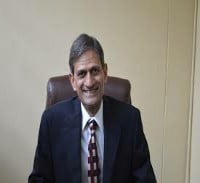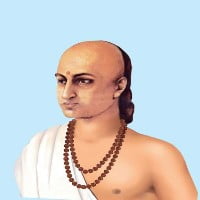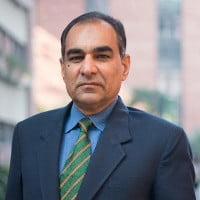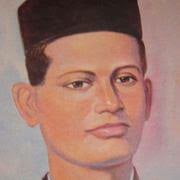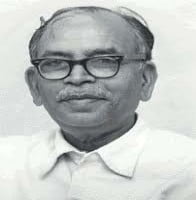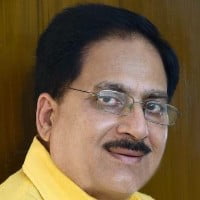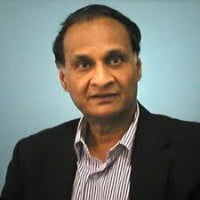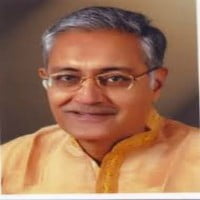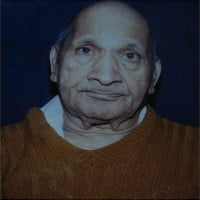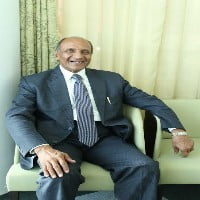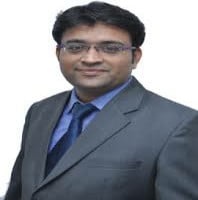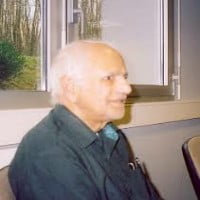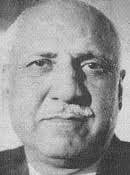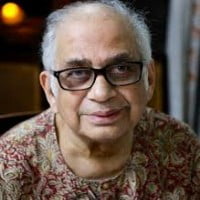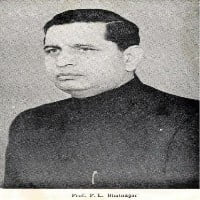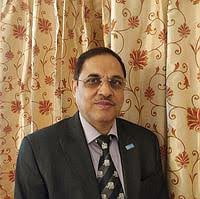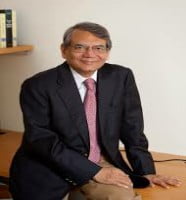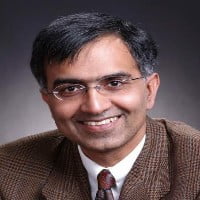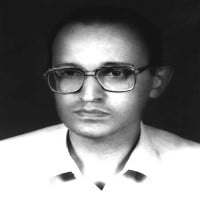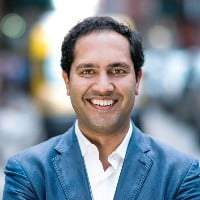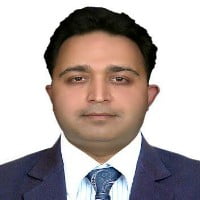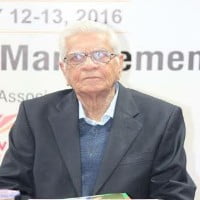Rajasthan is no less than any other state, it also contributed a lot for the world in everything whether it be discoveries or anything.
Here are some scientists from Rajasthan who has done wonders –
1.ARVIND BHATNAGAR –
- He was born on 19 November, 1936 in Beawar, Rajasthan.
- Died on 18 may, 2006, aged 69.
- Field is solar astronomy.
- Across India, he found several planetaria.
- He was the founder director of Udaipur solar observatory and the founder director of Nehru planetarium of Bombay.
- He was internationally known for his contributions to solar astronomy.
- He has done MSc in physics and after completing it joined UP state observatory, Nainital in 1958 and worked till 1961 there.
- In 1964, he obtained his PhD degree in solar physics from agra university under the guidance of Professor MK vainu bappu while working at kodaikanal observatory.
- At mount Wilson and palomar observatories, USA, he was awarded the Carnegie fellowship during 1968-1970.
- Then after that till 1972, he worked as a resident astronomer at the big bear solar observatory of California institute of technology, Pasadena, California, USA.
- In 1972, to establish a unique island solar observatory in the middle of lake fatehsagar in Udaipur he returned back to india.
- In December 1981 for its speedy growth, the solar observatory was taken over by department of space and was affiliated to the physical research laboratory, Ahmedabad.
- A novel project for solid waste management named SUCHE (swatch, healthy, urban, clean and hygienic environment) abhiyan was started by him in 1996 in several localities of Udaipur under ASTHA sansthan.
- In the evening of 18 may, 2006 he died leaving behind a large space in both scientific and social front.
2.ASHWANI PAREEK –
- He was born on 27 September, 1969 in Delhi. Although he is a native of sambhar lake, rajasthan.
- He is known for Research in Plant Molecular Biology and Biotechnology.
- He is an executive director of NAB.
- Currently working as a professor at school of life sciences, Jawaharlal nehru university, new delhi, and adjunct professor at university of western Australia.
- He is also a beneficiary of so many honors including the visitors award for technology development from the president of india.
- On 26 february, 2020, department of biotechnology, government of india, has awarded him by tata innovation award 2020.
- In understanding the physiological and molecular adaptations of xero halophytic plants he was so interested.
3.ASHUTOSH SHARMA –
- He was born on 22 august, 1961, ajmer, rajasthan.
- In 1982, he got his degree from Indian institute of technology, Kanpur.
- In 1984, graduated with master degree from Pennsylvania state university.
- Then after 3 years, done his Ph.D. in chemical engineering from university at buffalo.
- His field is chemical engineering and nanotechnology.
- He is an institute chair professor at the department of chemical engineering of Indian institute of technology of Kanpur.
- He has done pioneering research in the areas of colloids, thin film, adhesion, interfaces, patterning and in the fabrication and application of self-assembled nano structures.
- From 2007 to 2010 he was a member of editorial board of chemical engineering science.
4.AMIT GOYAL –
- He was born in Rajasthan, India but is a US citizen as of now.
- Currently, he is the Founding Director of the RENEW (Research & Education in Energy, Environment, and Water) Institute at SUNY-Buffalo in Buffalo, New York.
- At SUNY-Buffalo, he is also a SUNY Distinguished Professor and a SUNY Empire Innovation Professor.
- Goyal is a world-renowned researcher in the field of advanced electrical and energy materials, especially High Temperature Superconductors.
- He has over 85 patents that have been granted. In addition, he has over 350 articles to his credit.
- In 2009, a Thomson Reuters Essential Science Indicators (ESI) review of citations and articles published worldwide in the last decade in the subject of high-temperature superconductivity, between 1999–2009, placed him as the most cited author worldwide in those years.
- Also, he is currently a member of the National Academy of Investors and the National Academy of Engineers too.
- He has been awarded with several awards like DOE’s Energy 100 Award, World Technology Award in Advanced Materials (2012) etc.
5.AVDHESHA SUROLIA –
- He was born on 3rd December 1947 in Kishangarh, Rajasthan, India.
- In recent times, he works as a Glycobiologist at the Indian Institute of Science (IISc) in Bangalore and is currently an Honorary Professor at IISc’s Molecular Biophysics Unit (MBU).
- He also holds the Bhatnagar fellowship from India’s Council of Scientific and Industrial Research (CSIR).
- In 1970, he obtained his bachelor’s degree from the University of Jodhpur in Chemistry and Biology.
- In 1972, he got his master’s degree from Maharaja Sayajirao University, Baroda in biochemistry.
- He is well-known for his research on lectin structure and interactions, the orientation and dynamics of cell surface carbohydrate receptors and protein folding, diabetes, anti-malarials and anti-cancer therapies based on curcumin, flavonoids, and other natural products.
- His current research interests include neuropathic pain, neurodegenerative illnesses, and the relationship between immunity and obsessive compulsive disorder.
- He has made many scientific contributions like elucidating the role of glycosphingolipids, discovering novel blood group, unfolding of lectins and many more.
- Also, he is a member of the Third World Academy of Sciences in Trieste, Italy.
- He is the only member of the International Glycoconjugate Organization from India since the year 1998 and was its president from 2001 to 2004.
- Jawaharlal Nehru Birth centenary Lecture in 2008, Goyal Prize in the area of Life Sciences in 2002, TWAS Prize in Biology in 2001are among a few awards he has received till date.
6.BRAHMAGUPTA –
- He was born in 598 CE and died in 668 CE at the age of about 70 years.
- During the time of the Chavda dynasty emperor, Vyagrahamukha, he lived in Bhillamla in Gurjaradesa (now Bhinmal in Rajasthan, India) and was the son of Jishnugupta and practised Hinduism, namely Shaivitism.
- He was an astronomer and mathematician from India.
- He wrote two early works on astronomy and mathematics: the Brāhmasphuṭasiddhānta (BSS, “correctly established doctrine of Brahma”, dated 628), a theoretical treatise, and the Khaṇḍakhādyaka (“edible bite”, dated 665), a more practical text.
- Brahmagupta was the first to provide guidelines for calculating with zero.
- His works were written in elliptic verse in Sanskrit, as was usual in Indian mathematics.
7.BANWARI LAL –
- He was born on 1st July 1960 in Rajasthan, India.
- In 1981, he completed his undegraduation from the University of Rajasthan and then continued there to earn a master’s degree in microbiology in 1983.
- He has also secured a PhD in microbial biotechnology in the year 1987.
- He is an Indian environmental and industrial biotechnologist and the director of The Energy and Resources Institute’s Environmental and Industrial Biotechnology Division (TERI).
- Dr. Lal is well known for developing oilzapper technology and has been the Chief Executive Officer of ONGC-TERI Biotech Limited, a joint venture between TERI and the Oil and Natural Gas Corporation since 2008.
- In 2004, the Government of India’s Department of Biotechnology bestowed upon him the National Bioscience Award for Career Development, one of the highest Indian science honours, for his contributions to biosciences.
- He holds numerous Indian and international joint patents, including those with ONGC, DBT, IOCL, OIL INDIA, and TERI.
8.BISHWESHWAR NATH REU –
- He was born on 2nd July 1890 and died in the year 1947.
- He was a historian of Indian origin and began his career as an assistant to Gaurishankar Hirachand Ojha, from whom he acquired the old Dingal language.
- Later, he was named director of the Department of History (by Maharaja Sumer Singh of Jodhpur), the Department of Archaeology (by Maharaja Ummed Singh of Jodhpur), the Sardar Museum, the Pustak Prakash (Manuscript Library), and the Sumer Public Library of the erstwhile princely state of Jodhpur, Mahamahopadhyaya.
- He is most known for his history of Marwar, which he wrote as a historian, epigraphist, numismatist, and Sanskritist.
- He published books named Bharat ke Prachin Rajvansh in three volumes in the years 1920, 1921 and 1935 and later an English version of these books was also released.
9.DAULAT SINGH KOTHARI –
- He was born on 6th July 1906 in Udaipur, Rajasthan, India.
- He died on 4th February 1993 in Delhi, India at the age of 83.
- He was a scientist as well as an educationist.
- In 1928, he got his master’s degree from Allahabad University in physics guided by Meghnad Saha.
- He worked in University of Cambridge at the Cavendish Laboratory during his PhD work under Ernest Rutherford.
- When he returned to India he worked as a professor, reader and the Head of the Department of Physics at Delhi University, as a scientific advisor to Defense Ministry and more.
- He was the president of the Indian Science Congress in the year 1963 and was elected as the president of Indian National Science Academy in the year 1973.
10.D.K. TAKNET–
- He was born on 11th April 1958 in Shekhawati, Rajasthan, India.
- He is an Indian business historian and also a writer who has written pictorial books.
- He is very well known for his books on Marwaris and business history.
- Taknet completed his education from Jaipur, Pilani and Paris.
- He started his career as a Research Scholar of UGC in New Delhi and as a Senior Associate Professor at University of Rajasthan Jaipur.
- Also, he is the author of several works that have received favourable reviews, excerpts, and serialisations in daily newspapers. In addition, he contributes frequently to national and international print media.
11.GOVERDHAN MEHTA –
- He was born on 26th June 1943 in Jodhpur, Rajasthan, India.
- He is an Indian chemical scientist and a researcher.
- Mehta earned his BSc and MSc from BITS Pilani, as well as his PhD from Pune University.
- He has written around 400 scientific publication and was awarded the Trieste Prize.
- He worked as a Research Associate at Michigan State and Ohio State Universities from 1967 to 1969, as a professor at IIT Kanpur from 1969 to 1977, as Vice Chancellor of University of Hyderabad from 1994 to 1998 and more.
- He received Padma Shri Award, Legion d’honneur, Cross of the Order of Merit Award and a few more awards for his contibutions.
12.GIRIJA SHANKAR SHARMA –
- He was born in March 1938 in Bikaner, Rajasthan, India.
- Girija Shankar Sharma is a Rajasthani and Hindi literature historian and academic.
- Dungar College awarded him a Master of Arts (M.A.) in History, and the University of Rajasthan, Jaipur awarded him a Doctor of Philosophy (Ph. D.).
- He began working at the Rajasthan State Archives (Bikaner) in 1963 and retired as Deputy Director in 1996.
- He has many books published in his name like Marwari vyapari, ek aitehasik aur samajik vivechan, Itehaas-Ro-Saach, Ehsan ka ehsas etc.
13.H.P. GANDHI –
- He was born on 20th September 1920 in Pratapgarh, Rajasthan, India.
- He died on 5th June 2008 in Junagarh, Gujrat.
- Hemendrakumar Prithivraj Gandhi was a forefather of Indian phycology and diatomology.
- He completed his primary and secondary education at Pratapgarh and his intermediate degree in Agra.
- Later, in 1949, he earned a bachelor’s degree and a master’s degree in botany from Wilson College in Mumbai, where he specialised on algae under the supervision of renowned phycologist Prof. A. Ella Gonzales.
- He began as an assistant lecturer at Karnatak University (earlier known as Karnatak College) in Dharwar in July 1949, but was quickly transferred unceremoniously to M N College, Visnagar in Gujarat (August 1949), then to I Y College, Bombay (November 1949), and after another brief period, he joined Rajaram College, Kolhapur before returning to Karnatak College (June 1951).
- During the transfers, tours, and botanical excursions, his great interest in the subject compelled him to gather algae samples from all feasible locations and habitats in 1956 Bombay Presidency split
- He has a lot of publications in his name.
14.ISHWAR MODI–
- He was born on 12th December 1940 in Rajasthan, India.
- He is an Indian sociologist who pioneered leisure studies in the country.
- His work in this arena has received widespread acclaim in India and internationally.
- He earned his master’s degree in sociology and his doctorate from the University of Rajasthan in Jaipur and also completed his PhD with a prominent scholar Professor Yogendra Singh at the Centre for the Study of Social Systems, Jawaharlal Nehru University, New Delhi.
- Later, he joined the Department of Sociology at the University of Rajasthan as an Assistant Professor of Sociology (September 1974).
- He received the Indian Sociological Society’s Lifetime Achievement Award in 2015, which is the highest and most coveted award given by the Society to Indian Sociologists who have made profound and exceptional contributions in the field of sociology, thereby enriching the discipline and enhancing the capability and respectability of its professionals.
- He collaborated in a project sponsored by UNESCO on the topic “Theatre across Cultures: Encounters along the Silk Road”, with the scholars from Taiwan, France and Switzerland.
- After he retired he started working on his dream to establish IIISS (India International Institute of Social Sciences.
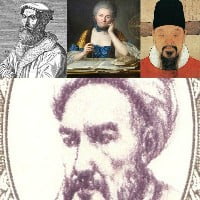 15.JAGANNATHA SAMRAT–
15.JAGANNATHA SAMRAT–
- He was born in 1652 and died in the year 1744 in Rajasthan, India.
- He was an Indian astronomer and mathematician who worked in Jai Singh II of Amber’s court and was also his mentor.
- His father’s name was Gaea and grandfather’s name was Vihala[2], came from a Vedic family from Maharashtra.
- He acquired Arabic and Persian at Jai Singh’s recommendation in order to study Islamic astronomy.
- He translated works from various languages into Sanskrit after becoming fluent in them.
- Rekha-ganita, a translation of Euclid’s Elements based on Nasir al-Din al-Arabic Tusi’s recension of the same, is one of these versions and Siddhanta-sara-kaustubha, an Arabic translation of Ptolemy’s Almagest by Nasir al-Din al-Tusi.
- Siddhnta-samr, which details astronomical equipment, their design and manufacture, and observations, is one of his unique works. It also shows how these data are used to fix parameters and create almanacks. It describes how Jai Singh, who had previously used metal astronomical instruments (such as the astrolabe), later switched to huge outdoor observatories (such as the Jantar Mantar) because they were more precise; additionally, they were built of stone and mortar rather than brick to reduce the effects of wear and tear and climate.
- Yantra-prakra, which goes into greater detail about astronomical instruments, measurements, computations, and so on, as well as observations made by him.
16.JITENDRA K. JAIN–
- He was born in 1960 in Rajasthan, India.
- He is an Indian-American physicist who holds the Evan Pugh University Professorship and the Erwin W. Mueller Professorship in Physics at Pennsylvania State University.
- He also serves as an Infosys Chair Visiting Professor at IISc in Bangalore.
- Jain is well-known for his theoretical work on quantum many-body systems, most notably for proposing Composite Fermions.
- He did his schooling from Sambhar, Rajasthan and later got his bachelor’s and master’s degree from Maharaja College, Jaipur and IIT Kanpur respectively.
- He also completed his PhD from Stony Brook University under Prof. Philip B. Allen where he later became a faculty in 1989.
- In 2002, he was the co-recipient of Oliver E. Buckley Prize with Robert Willett and Nicolas Read by the American Physical Society.
- In 2021, he got elected to National Academy of Sciences.
17.JAI SINGH II–
- He was born on 3rd November 1699 and died on 21st September 1743.
- Also known as Maharaja Sawai was the monarch of the Kingdom of Amber, and he eventually built and made Jaipur his capital.
- He was born in Amber, the Kachwahas’ capital and was the Kachhwaha’s 29th ruler. After the death of his father, Raja Bishan Singh, on December 31, 1699, he ascended to the throne of Amber at the age of 11.
- The Mughal Emperor Aurangzeb bestowed the title of Sawai on him in 1699 after summoning him to Delhi and being struck by his wit.
- On 21 April 1721, the Mughal emperor Muhammad Shah conferred upon him the title of Saramad-i-Rajaha-i-Hind, and on 2 June 1723, the titles of Raj Rajeshvar, Shri Shantanu ji, and Maharaja Sawai were bestowed upon him.
- In 1727, he relocated the capital of his kingdom from Amber to the newly established city of Jaipur, and he performed two Ashvamedha sacrifices, once in 1734 and again in 1741.
- He was fascinated with mathematics, architecture, and astronomy. He also built the Jantar Mantar observatories in several locations throughout India, including his own city of Jaipur.
- He translated Euclid’s “Elements of Geometry” into Sanskrit.
18.KAILASH SANKHALA–
- He was born on 30th January 1925 and died on 15th August 1994 in Jodhpur, Rajasthan, India.
- Kailash Sankhala was an Indian biologist and conservationist.
- He was the Director of the Delhi Zoological Park and Rajasthan’s Chief Wildlife Warden.
- He is most renowned for his work in tiger conservation. Sankhala was the inaugural Director of Project Tiger, an Indian conservation programme founded in 1973.
- He was dubbed “The Tiger Man of India.”
- In 1992, he was awarded the Padma Shri, and in 2013, he was granted the Rajasthan Ratan.
- He was in charge of wildlife reserves at Sariska, Bharatpur, Banvihar, and Ranthambhor, as well as forests in Rajasthan, from 1953 to 1964.
- He was appointed Director of the Delhi Zoological Park in 1965.
- In 1973, he was named the director of Project Tiger, an effort to save the Indian tiger from extinction.
- In 1973, his study led him to become the first Director of Project Tiger. In 1989, Sankhala established the Tiger Trust. Following his father’s death, Sankhala’s son, Pradeep Sankhala, took over the Tiger Trust. His son Amit Sankhala took over after his father died in 2003.
- In his honour, the Ministry of Environment and Forests established the Kailash Sankhala Fellowship award for conservation work.
19.MADAN LAL MEHTA–
- He was born on 24th December 1932 in Relmagra, Udaipur and died on 10th December 2006 there only.
- He was an Indian-born theoretical physicist well recognised for his random matrix theory work.
- In 1956, he received his Master of Science in Mathematics from the University of Rajasthan (Jaipur).
- In November 1958, he moved to France to join the Department of Mathematical Physics (now the Department of Theoretical Physics) at the Centre d’Etudes Nucléaires de Saclay, after spending two years at the Tata Institute of Fundamental Research in Bombay.
- In 1961, he obtained his PhD from Claude Bloch, who was working on low density materials at the time. He worked at Princeton’s Institute for Advanced Study from 1962 to 1963.
- He subsequently moved to India, and worked at Delhi University before returning to the United States in 1966–1967, where he worked at Princeton University and Argonne National Laboratory.
- He obtained French citizenship in 1971 after being hired by the CNRS in 1970.
- He returned to India in January 2005 after finishing his work at CEA Saclay.
- Mehta was fluent in a number of languages, including English, French, Russian, Japanese, Mandarin, and Hindi.
20.MITHAN LAL ROONWAL–
- He was born on 18th September 1908 and died on 22nd July 1990 in Jodhpur, Rajasthan, India.
- Mithan Lal Roonwal was an Indian biologist and the director of India’s Zoological Survey.
- He was the first to notice geographic patterns in the shape of grey langurs’ tails (which were classified as a single species at the time). During his time at the Zoological Survey of India, he described a number of new species.
- He attended Sir Pratap School, Sardar School, and Darbar High School. He subsequently attended Lucknow University, where he earned a Bachelor of Science in 1929 and a Master of Science in 1930.
- In 1931, he began working at the Locust Research Institute in Lyallpur before moving to Cambridge, where he earned a Ph.D. in 1935.
- In 1934, he was a demonstrator at Cambridge University, and in 1935, he taught at the Government College Ajmer for a few months.
- From 1939 to 1940, he worked at the Zoological Survey of India in the birds and mammals branch. Roonwal entered the army during WWII and served as a Major in the 15th Punjab Regiment, receiving a Burma Star for his efforts.
- He began working as an entomologist at the Forest Research Institute in 1949, categorising the insect collections housed there.
- In 1956, he was appointed director of the Zoological Survey of India, succeeding Sunder Lal Hora.
- In 1965, he left the ZSI to join Jodhpur University. In 1962, he got a Sc.D. from Cambridge University for his work on the morphology and systematics of termites.
21.MAITHILI SHARAN–
- He was born on 4th January 1953 in Rajasthan, India.
- He is a mathematician from India who specialises in mathematical modelling, biofluid mechanics, air pollution, and atmospheric boundary layer.
- In 1992, he received the Shanti Swarup Bhatnagar Prize for Science and Technology, India’s highest science honour, in the mathematical sciences category.
- His notable discoveries include the development of mathematical models for the transport of gases in the pulmonary and systemic circulations, including the brain, and the dispersion of air pollutants in low wind conditions, as well as the numerical simulation of the Bhopal gas leak and the weak wind nocturnal boundary layer.
22.PUSHPA MITTRA BHARGAVA–
- He was born on 22nd February 1928 in Ajmer, British raj and died on 1st august 2017 in Hyderabad, India at the age of 89.
- He was a scientist, author, and administrator from India.
- In Hyderabad, he established the Centre for Cellular and Molecular Biology, a federally financed research centre.
- He was an outspoken and powerful figure in the development of scientific temper in India, arguing that scientific rationality should be nurtured as a civic obligation.
- Bhargava relocated to Hyderabad after earning his Ph.D. at Lucknow University.
- Between 1950 to 1953, he worked in the Central Laboratories for Scientific and Industrial Research in Hyderabad, followed by Osmania University.
- In 1953, he moved to the United States on a postdoctoral fellowship at the McArdle Memorial Group of Cancer Research, University of Wisconsin, Madison (US), where he worked in Charles Heidelberger’s laboratory.
- He returned to Hyderabad in 1958 and set up CCMB (Centre of cellular and Molecular Biology.
- He was awarded with Padma Bhushan in1986 by the President of India, which he returned in 2015 in a protest.
23.PRABHU LAL BHATNAGAR–
- He was born on 8th August 1912 in Kota, India and died on 5th October 1976 in Allahabad, India at the age of 64.
- He was an Indian mathematician who contributed to the Bhatnagar–Gross–Krook operator, which is utilised in Lattice Boltzmann techniques (LBM).
- He attended Rampura High School and then Herberter College in Kota. Then, he attended Maharajah’s College in Jaipur, where he earned a BSc with honours in 1935, followed by an MSc the following year.
- In 1939, he received a DPhil in mathematics for his thesis, On the Origin of the Solar System.
- On the invitation of S. N. Mukherjee, he enrolled in St. Stephen’s College in Delhi in 1939 and stayed for the next 16 years. He worked on the hypothesis of white dwarfs there, both independently and collaboratively with Daulat Singh Kothari.
- As a Fulbright scholar, he was accepted to Harvard University in 1952. In the study of nonlinear gases, he collaborated with Donald Howard Menzel and Hari Kesab Singh.
- Together with Eugene P. Gross and Max Krook, his work with the Boltzmann equation resulted in the well-known BGK collision model in 1954.
- In 1950, he was named a fellow of the Indian National Science Academy, and in 1955, he was named a fellow of the Indian Academy of Sciences. In 1956, he was invited to become the founding Professor of the Department of Applied Mathematics at the Indian Institute of Science.
- Along with his studies, he created the groundwork for the Indian National Mathematics Olympiad.
- On January 26, 1968, he was awarded the Padma Bhushan for his contributions to the nation.
- In 1969, he became Vice-Chancellor of Rajasthan University in Jaipur, and in 1971, he became Head of the Mathematics Department of Himachal Pradesh University in Shimla. He also served on the Union Public Service Commission and was the founding director of the Mehta Research Institute (now renamed as the Harish-Chandra Research Institute).
- Following his death on October 5, 1976, in Allahabad, the Illustrated Weekly of India paid tribute to him with an article written by the well-known science writer Jagajit Singh.
24.RAJPAL SINGH YADAV–
- He was born in 1958 in Anandpur, Rajasthan, India.
- He is an Indian scientist working at the World Health Organization headquarters in Geneva, Switzerland, in the field of vector ecology and management.
- He has collaborated with a number of countries and international organisations to develop and promote public health pesticide management and vector control policies.
- In 1977, he earned a bachelor’s degree in biology from the University of Rajasthan in Jaipur, India. Later, from the same university, he received his M.Sc in Zoology in 1979 with a University gold medal and his Ph.D in science in 1984 in the field of insect toxicology, for which he was awarded fellowships from the Council of Scientific and Industrial Research and the Indian Council of Medical Research.
- In 1989, he completed a certificate course in tropical epidemiology at the University of the Philippines, Manila’s College of Public Health.
- In 1999, he was awarded a British Council Fellowship to study the health impact of development initiatives at the Liverpool School of Tropical Medicine in Liverpool, UK.
- He worked as a lecturer in 1984 and then as a scientist in the year 2009. From 1988 to 1995 he was the founder head of NIMR in Rourkela.
- He has more than 28 years of experience in vector bionomics and control, malariology, and pesticide management. He helped WHO’s normative tasks by offering recommendations on the evaluation of new pesticides for public health use.
- He has many journals published under his name as well.
25.RAKESH MOHAN–
- He was born in 1948 in Rajasthan, India.
- In 1969, he got a B.Sc. in electrical engineering from Imperial College London, and in 1971, he received a B.A. in economics from Yale University.
- In 1977, he obtained his Ph.D. from Princeton University in economics after finishing a doctoral dissertation titled “Development, structural change, and urbanisation: investigations using a dynamic three sector general equilibrium model applied to India, 1951-1984.”
- He returned to India in 1980, where he first worked as a senior consultant for the Planning Commission, where Manmohan Singh was also a member.
- In September 2002, he was appointed Deputy Governor of the Reserve Bank of India (RBI), then in October 2004 he was appointed Secretary, Department of Economic Affairs and Chief Economic Adviser to the Finance Minister of India, a position he held until July 2005.
- He is currently the Vice President of the Indian Institute for Human Settlements. In November 2012, he was selected as the IMF’s Executive Director for a three-year term.
- He joined Nestlé India as a non-executive director in April 2010.
- He remained an adviser to numerous ministries in the Indian government, including industry and finance, and later became an important part of Indian economic reforms in the 1990s, with his report under the ‘Rakesh Mohan Committee on Infrastructure’ becoming a “landmark document in the evolution of thinking on economic policy issues.”
- He is a Professor in the Practice of International Economics of Finance at Yale School of Management and a Senior Fellow at Yale University’s Jackson Institute for Global Affairs. He will soon take over as India’s Executive Director at the International Monetary Fund in Washington, DC.
26.SANJEEV ARORA–
- He was born in 1968 in Jodhpur, Rajasthan, India.
- He is a theoretical computer scientist who is well known for his work on probabilistically checkable proofs, namely the PCP theorem.
- His research interests include computational complexity theory, the use of randomness in computation, probabilistically checkable proofs, computing approximate solutions to NP-hard problems, geometric embeddings of metric spaces, and theoretical machine learning.
- He is currently the Charles C. Fitzmorris Professor of Computer Science at Princeton University (especially deep learning).
- In 1990, he earned a B.S. in mathematics and computer science from MIT, and in 1994, he earned a Ph.D. in computer science from the University of California, Berkeley under Umesh Vazirani.
- In 2001, he received the Gödel Prize for his work on the PCP theorem, and in 2010, he received the prize again for discovering (together with Joseph S. B. Mitchell) a polynomial time approximation approach for the Euclidean travelling salesman problem.
- He was elected a Fellow of the Association for Computing Machinery in 2008. In 2011, he received the ACM Infosys Foundation Award.
- He coauthored the book Computational Complexity: A Modern Approach with Boaz Barak and is the founder and Executive Director of Princeton’s Center for Computational Intractability.
27.SUBHASH CHANDRA LAKHOTIA–
- He was born on 4th October 1945 in Churu, Rajasthan, India.
- He is an Indian academic, cytogeneticist, Distinguished Professor of Zoology at Banaras Hindu University, and INSA senior scientist.
- He is well-known for his pioneering work on Drosophila chromosome organisation and replication.
- He is a Raja Ramanna fellow of the Departments of Science and Technology and Atomic Energy, and a member of all three major Indian science academies: the Indian National Science Academy, the Indian Academy of Sciences, and the National Academy of Sciences, India.
- In 1989, the Council of Scientific and Industrial Research, India’s main scientific research agency, gave him the Shanti Swarup Bhatnagar Prize for Science and Technology, one of the highest Indian science prizes, for his contributions to biological sciences.
- He received his bachelor’s degree in Zoology Honours from Vidyasagar College, Calcutta University in 1964, followed by his master’s degree in Zoology and Comparative Anatomy from Calcutta University in 1966.
- He obtained his PhD in 1970 while continuing his doctoral studies at the same university’s Zoology Department, after which he did post-doctoral studies at Delhi University from 1970 to 1971, and began his career as a lecturer at Burdwan University in 1971.
- In June 1972, he transferred to Gujarat University, where he remained until September 1976 before joining Banaras Hindu University as a reader. He was promoted to full professor in 1984 and remained there until his retirement in 2010.
28.VISHAL GARG–
- He was born in June 1973 in Jodhpur, Rajasthan, India.
- Vishal Garg is a researcher from India who specialises in building energy efficiency and Cool Roofs.
- He is a Professor at the International Institute of Information Technology in Hyderabad and the Director of the Center for IT in Building Science.
- He is the first Dr. Arthur H. Rosenfeld Urban Cooling Achievement Award recipient and is an active participant in the creation of national-level policies and standards, as well as the implementation of building energy codes in India, and a Fellow of IBPSA.
- He obtained his Bachelor of Engineering in 1995 from the J.N. Vyas University’s M.B.M. Engineering College in Jodhpur.
- He earned his Ph.D. from IIT Delhi’s Center for Energy Studies under the supervision of Prof. N. K. Bansal, and successfully defended it in 2000.
- In March 2000, he began his career at IIIT Hyderabad as an Assistant Professor and the Founding Head of the Center for IT in Building Science. He has worked on a number of significant worldwide initiatives involving building energy efficiency.
29.VINAY GUPTA–
- He was born on 31st March 1972 in Rajasthan, India.
- In 1990 and 1992, he received his BSc and MSc degrees from Government College, Ajmer.
- Following that, he enrolled in doctorate studies at Maharshi Dayanand Saraswati University, where he earned a PhD in 1997.
- He also completed post-doctoral research on lithium-ion batteries as a JSPS scholar at Kyoto University from 1998 to 2000 and at Aichi Institute of Technology from 2000 to 2003.
- The following year, he relocated to Germany as an Alexander von Humboldt Fellow to study on carbon nanotubes and graphene at Technische Universität Ilmenau, where he stayed until 2004.
- He is an Indian former senior scientist at the National Physical Laboratory of India’s Physics of Energy Harvesting section and a materials scientist.
- He is also a former Alexander von Humboldt Fellow known for his research on organic solar cells, carbon nanotube arrays, and Förster resonance energy transfer.
- In 2017, the Council of Scientific and Industrial Research, India’s main scientific research agency, awarded him the Shanti Swarup Bhatnagar Prize for Science and Technology, one of the highest Indian science honours, for his contributions to physical sciences.
30.VIJAY SHANKAR VYAS–
- He was born on 21st August 1931 and died on 12th September 2018 in Allahabad, India at the age of 64.
- He was a well-known agricultural economist in India. He was a member of the Pushkarna Brahmin community in Bikaner and wrote six books.
- Vyas was the Director of IIM Ahmedabad, IDS Jaipur, and the World Bank’s Senior Advisor, Agriculture and Rural Development Department. Professor Vyas retired from the Institute of Development Studies in Jaipur.
- He also served on the Reserve Bank of India’s Central Board of Directors.
- He was invited to give lectures and keynotes at numerous workshops and seminars in India and around the world. As a result of his service, he was named an honorary life member of the International Association of Agricultural Economists.
- He was elected to the National Academy of Agricultural Sciences as a Fellow.
- Vyas was awarded the Padma Bhushan by the Government of India in 2006.
- On Republic Day, he was honoured at an award ceremony by India’s President.

